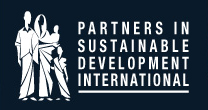A Developing Education System in a Developing Country
Even though Bangladesh has come a long way in educating its citizens since it became a country in 1971 after a war that ravaged the country and killed millions, it continues to have its limitations. Regardless of the challenges that COVID-19 has imposed upon the Bangladeshi education sector, many problem areas, such as budgetary constraints, existed before the pandemic.1 Less than three percent of Bangladesh’s GDP is dedicated to education, and from this only a small fraction is dedicated to educational resources and compensation towards teachers.2
In addition to being under-compensated, teachers are typically sent to classrooms without any proper training or education, thus are unable to provide a well-rounded and knowledgeable curriculum for their students. The quality of education that Bangladeshi students receive is severely affected by this.1
Schools are typically ill-equipped with the necessary resources needed to foster a successful learning environment, such as textbooks. Moreover, many classrooms are overcrowded, as there is not enough space for the growing student population.2 These factors, along with those mentioned previously, have contributed to the high student dropout rate currently being observed in the country. In addition, students who are able to afford higher education, typically will pursue education overseas, which has exacerbated the country’s “brain drain”.3
In terms of the educational system, it is controlled and managed by the Ministry of Education (MOE) which is located in Dhaka, the capital of Bangladesh. Subjects taught at schools include Bangla, Bangladesh studies, English, mathematics, science, and social studies. Elementary education begins at age six and is provided free-of-charge to students however, is typically inaccessible for many students living in rural areas due to distance restraints and the fact that many of these students have obligations to help with farm work at home.3
PSDI’s Child Development Centers are aiming to change this. In the educational component of PSDI’s work, students living in the most rural and remote areas of Bangladesh where we operate are provided with two years of quality primary education prior to entering government schools. PSDI acknowledges the hardships that many of these children have to face and know that education is key in providing them with a brighter future.
PSDI adds music, dancing, art, poetry, and exercise into its education curriculum to press for a more well-rounded education. In addition, PSDI hires and trains instructors for its schools and provides all necessary workbooks and supplies. There is also a meal or snack prepared by the student’s mothers every day – a key element as many children are malnourished. The school day is four hours a day for six days a week all year long, allowing students to help work in the fields at home.
The cost of providing this education to these beautiful children is only $66 per child per year for a total of $2,400 per school of 30 children. Will you consider joining us in our efforts to provide children from poor families with essential education who would otherwise not have this opportunity? What a wonderful way to honor a teacher in your life, or someone who made sure your education was a priority. Click here to donate. Thank you.
